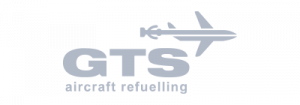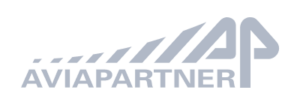Report Integral Safety Analysis Schiphol
NLR published an Updated Integral Safety Analysis Report in February 2020 (IVA 2020). This report follows the Integral Safety Analysis Report of February 2018 (IVA 2018). These reports were commissioned by the Ministry of Infrastructure and Water Management and describe various analyses of the effects on safety of a moderate and controlled growth of the number of air transport movements within the current operational concept at Schiphol.
The IVA 2020 concludes that:
“due to the number of measures with an expected positive effect and the autonomous safety improvement percentage that outpaces the traffic growth, it can be stated that Schiphol can safely grow to 540,000 air transport movements over the period 2020-2024.”
This report is an update of the IVA 2018, in which NLR concluded that:
“The combination of Schiphol-specific measures identified in this study and autonomous improvements in safety enable limited traffic growth within Schiphol’s current operational concept without increasing the risk of an accident per year.”
In both studies, NLR has taken the 36 accident categories defined by ICAO as its starting point. The IVA 2020 confirmed that growth of traffic at Schiphol will have an impact on the accident probability for nine of these categories. It was subsequently established that the measures planned and implemented by the sector for these categories, in combination with the autonomous safety improvement in the aviation sector in general, enable safe growth at Schiphol.
The nine accident categories and NLR’s conclusions in the IVA 2020 are described below.
The following measures have been included in the roadmap to reduce the risk of collisions and near-collisions between aircraft:
In progress
Implemented
Evaluated
- Electronic flight strips
- Increased upper limit of the Terminal Manoeuvring Area
- Navigation technology
- Redesign of work stations in the Control Tower
NLR concludes that, due the combination of autonomous safety improvements (improvements in safety effected worldwide, such as fleet renewal, new technology and improved regulations) and the Schiphol-specific measures referred to above, there will be no increased risk of collisions between two aircraft in the air if the number of air transport movements increases.
This concerns incidents that could occur during, or as a result of, ground handling activities such as cargo loading and unloading, embarking and disembarking passengers and the pushback from the aircraft stand.
The following measures have been included in the roadmap to reduce the risk of ground handling incidents:
In progress
- Colocation towing movement and ground control
- Deviations by ground handling staff
- Risk reduction for docking of aircraft
- Display of “STOP” on inactive docking guidance systems
- Improve Pedestrian Safety
- Sharing ground equipment and vehicles
- Safe ground handling A32xneo
- Handling A321 on short stands
- Renaming taxiways
Implemented
Evaluated
- Check pushback procedure online
- Ground handling adverse weather procedure
- Fixed connection to fuel system
- Reduce risk of ground collision between two aircraft in pushback
- Reduction of ground vehicle movements from and to buffer positions
NLR concludes that, due the combination of autonomous safety improvements (improvements in safety effected worldwide, such as fleet renewal, new technology and improved regulations) and the Schiphol-specific measures referred to above, there will be no increased risk of a ground handling incident if the number of air transport movements increases.
Collisions between an aircraft on the ground with another aircraft (including a towed aircraft), a person, a ground vehicle, an obstacle, a building, etc.
The following measures have been included in the roadmap to reduce the risk of ground collisions:
In progress
- Colocation towing movement and ground control
- Completion dual taxiway system
- Improve Pedestrian Safety
- Increase number of aircraft parking positions
- Pushback support tool
- Safe ground handling A32xneo
- Handling A321 on short stands
Implemented
Evaluated
- Double guidance lines to the Alpha taxiway
- Double guidance lines to the Bravo taxiway
- Uniform platform extension from 9 to 12 parking positions
- Fixed connection to fuel system
- Ground handling adverse weather procedure
- One-way traffic on the Alpha and Bravo taxiways
- Revising naming of taxiways
- Three ground controllers
- Uniform platform extension from 5 to 9 parking positions
- Reduction of ground vehicle movements from and to buffer positions
NLR concludes that, due the combination of autonomous safety improvements (improvements in safety effected worldwide, such as fleet renewal, new technology and improved regulations) and the Schiphol-specific measures referred to above, there will be no increased annual risk of ground collisions if the number of air transport movements increases.
Runway Incursions are all safety incidents in which an aircraft, vehicle or person inadvertently enters the restricted area around a runway. In these incidents, an active runway is entered without authorisation, or the authorisation should not have been given. This also includes incidents where no aircraft were involved and incidents that did not pose a risk because the runway was not in use at the time.
The following measures have been included in the roadmap to reduce the risk of runway incursions:
In progress
- Colocation towing movement and ground control
- Follow the Greens
- Last minute runway combination changes and complexity of changes in runway combinations
- One runway, one frequency, one language (OROFOL)
- Stop bar 24 hours
Implemented
Evaluated
- Electronic flight strips
- Uniform platform extension from 9 to 12 parking positions
- Improved coördination between runway controller and tower assistant
- Intersection N2/E6 towards runway 18L (Aalsmeerbaan)
- Routing between the Kilo platform and runway 22 (Schiphol Oostbaan)
- Runway occupied strip
- Southern departures on runway 18C (Zwanenburgbaan)
- Uniform platform extension from 5 to 9 parking positions
NLR concludes that, due the combination of autonomous safety improvements (improvements in safety effected worldwide, such as fleet renewal, new technology and improved regulations) and the Schiphol-specific measures referred to above, there will be no increased annual risk of runway incursions if the number of air transport movements increases.
The NLR report of 2018 describes existing measures to prevent abnormal contact with the runway, which may be intensified. The individual safety management systems and the ISMS joint sector continuously monitor whether the measures need to be intensified by conducting incident investigations, safety audits, training programmes for cockpit crews and flight data monitoring programmes. In addition to the existing measures, the roadmap describes one new measure: ‘Reducing the risks of incorrectly lined-up aircraft prior to takeoff’. With this measure, the sector has implemented the recommendations of an incident investigation carried out by the Dutch Safety Board (OVV). The effectiveness of the current measures will be evaluated in the ISMS.
In progress
Evaluated
NLR concludes that, due the combination of safety improvements worldwide (such as fleet renewal, new technology and improved regulations) and the Schiphol-specific measures referred to above, there will be no increased annual risk of abnormal runway contact if the number of air transport movements increases.
A runway excursion is an incident whereby an aircraft skids off the runway during takeoff or landing. This can occur at the side of the runway (runway veer-off) or at the end of the runway (runway overrun).
NLR concludes that, due the combination of safety improvements worldwide (such as fleet renewal, new technology and improved regulations) and the Schiphol-specific measures referred to above, there will be no increased annual risk of runway excursions if the number of air transport movements increases.
When an aircraft lands just before or just after the runway, but not on the runway, we call this an undershoot (before the runway) or overshoot (after the runway). This can occur during a landing or emergency landing immediately after a takeoff or restart.
NLR concludes that, due the combination of safety improvements worldwide (such as fleet renewal, new technology and improved regulations) and the Schiphol-specific measures referred to above, there will be no increased annual risk of undershoot or overshoot if the number of air transport movements increases.
When an aircraft that is fully under control or controllable collides, or almost collides, with the ground, water or an obstacle, this is called a Controlled Flight Into/Toward Terrain.
NLR concludes that, due the combination of safety improvements worldwide (such as fleet renewal, new technology and improved regulations) and the Schiphol-specific measures referred to above, there will be no increased annual risk of Controlled Flight Into/Toward Terrain if the number of air transport movements increases.
If the crew is no longer able to control the aircraft, the flight may deviate from its flight path with all the safety risks this entails. Loss of Control – In Flight involves a loss of control that is not a direct result of system or component failure.
NLR concludes that, due the combination of safety improvements worldwide (such as fleet renewal, new technology and improved regulations) and the Schiphol-specific measures referred to above, there will be no increased annual risk of Loss of control – In Flight if the number of air transport movements increases.





